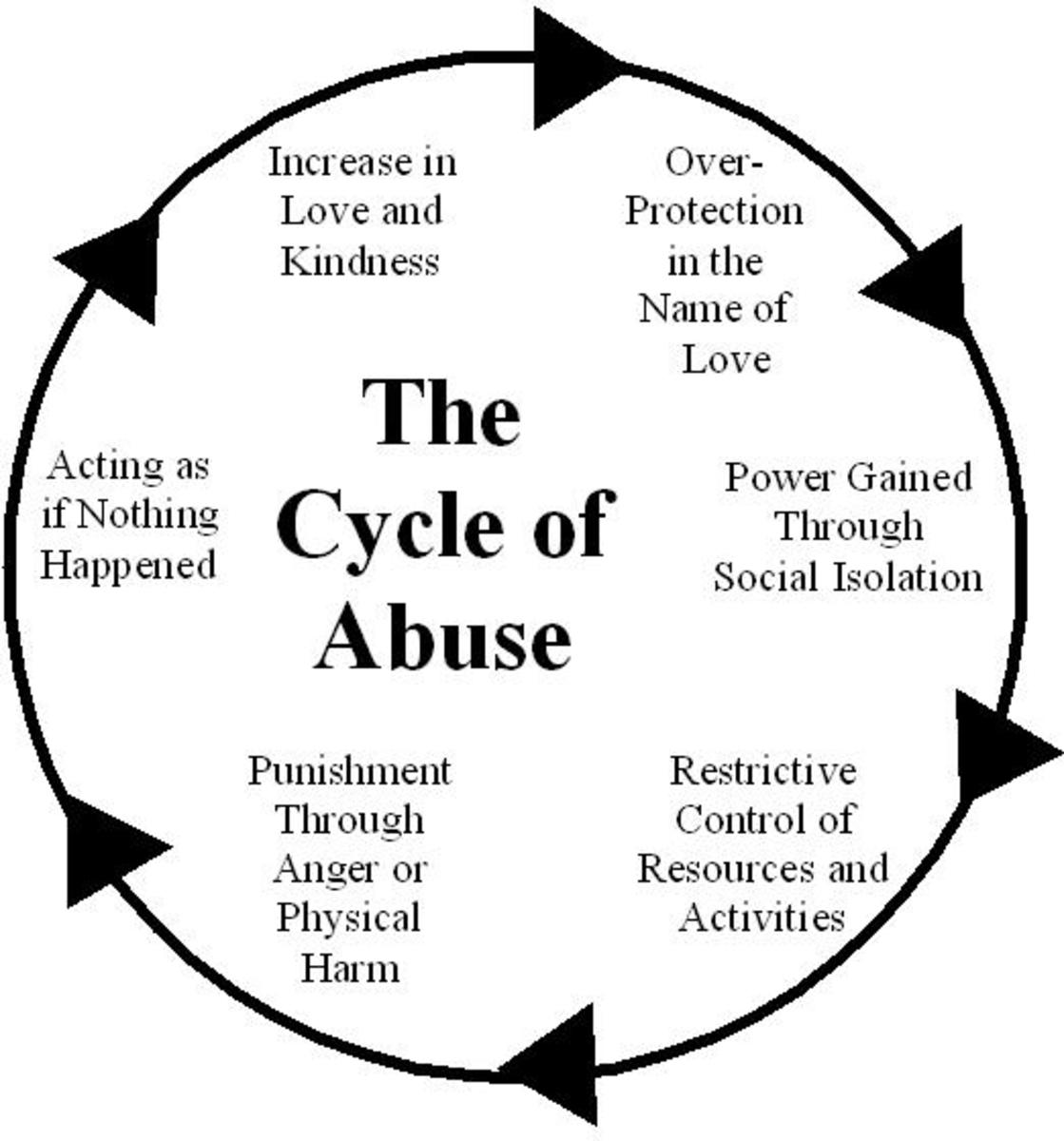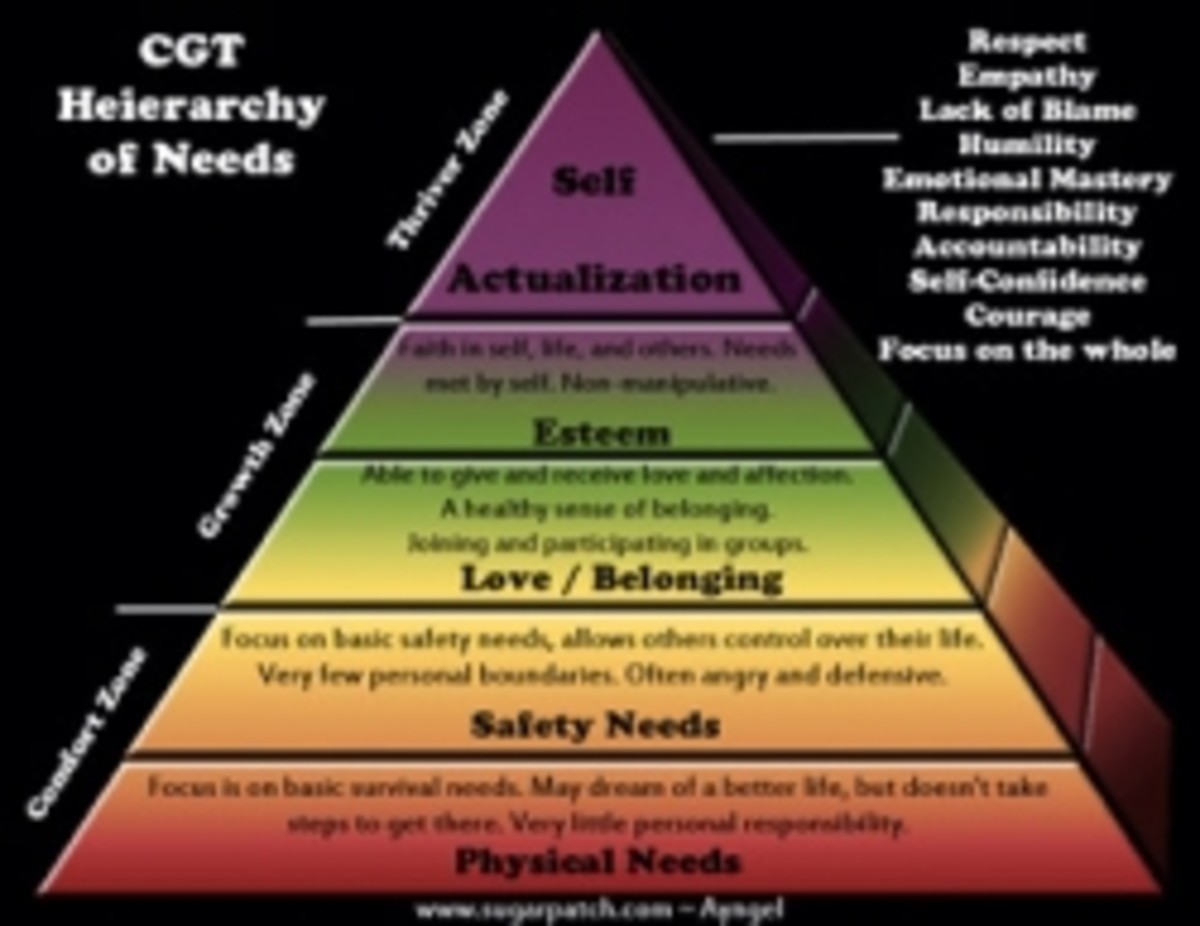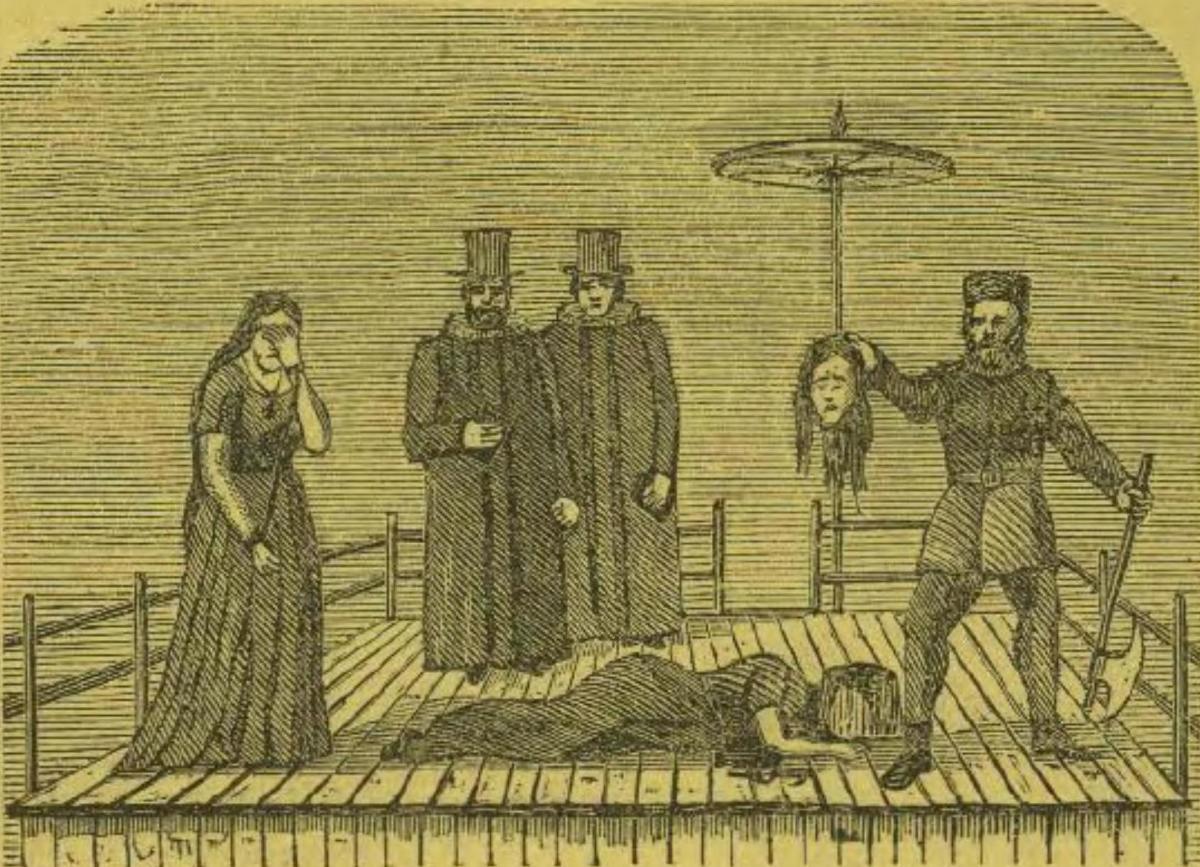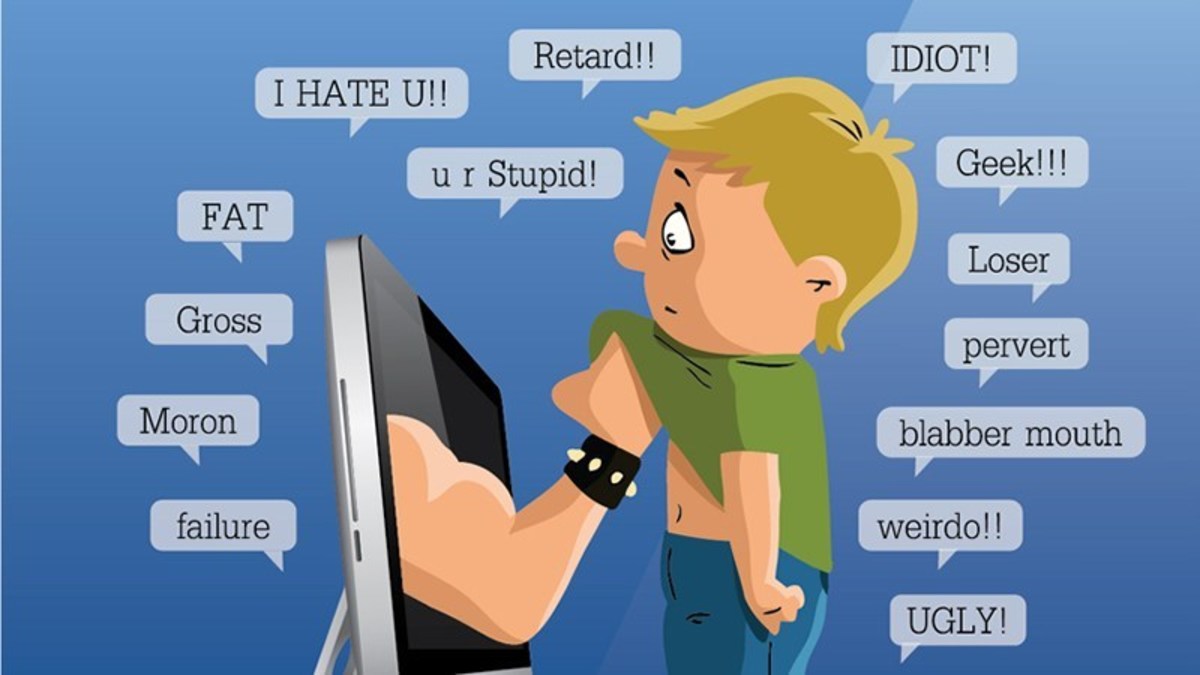Elder Abuse - identifying it and coping with it
What if the enemy is someone you gave birth to?

The other foot
Hi, I'm Judy - and I'm a victim of elder abuse.
Television idols like Oprah and Doctor Phil talk a great deal about child abuse. I'd venture to say that the going theory in psychological circles is that if something is wrong with you, it's either one or both parents' fault that you're suffering or dysfunctional in some way.
I am not questioning that. In fact, I can attest to the fact that the impact of a parent's actions can be devastating.
Having been a victim of just about every kind of abuse that a child can experience, my recovery from those things nevertheless has led me to paint the world with a much larger brush than just "child abuse."
Abuse is wrong no matter HOW old (or young) you are.
The most common justification given by adult abusers of their parents is that they're just paying them back for all the abuse the parent heaped on them when they were young. While in many cases this is true, in other cases it is not. Either way, NOTHING justifies abuse. NOTHING.
It starts when the child is old enough to make decisions for him or herself yet is still living under the parents' roof. As freedoms increase, it is hard to decide what responsibilities go with those freedoms. It is very easy to loosen up too much on the reins - or tighten them too tightly. Besides which, every child is different and there is no operating manual that comes with that particular model.
Occasionally, there is a child who, in spite of all efforts to establish boundaries and limitations while encouraging independence, either loses his or her moral compass ... or never had one in the first place.
Those are only two recipes (of many) for elder abuse. The younger person takes advantage of the elder's generosity or of the ever-present sense of shame or guilt for past sins. Before long, the elder has been backed into a corner, trapped, bullied by the younger. The shoe is on the other foot now.
The vicious wheel of misfortune begins. Tied up with emotional baggage from the past, it becomes a cycle of abuse involving the acts themselves (which can be stealing, using possessions without permission, verbal assaults, manipulation, guilt trips, physical abuse and more.) The abused person makes excuses for the abuser, and capitulates rather than confronts. The abuser gains more and more power. The parent loses more and more power.
Breaking that cycle is the hardest thing a parent can deal with, and that includes the child's death. Grief is one thing to deal with, but abuse heaps on new and fresh emotional and other injuries on a daily (sometimes an hourly) basis.Death is final, yes, and it is horrible. No parent should ever have to bury his or her child. However, death does not add more death to itself every day.
Abuse does,
And abuse affects the abused person in so many ways.
Does This Describe You?
Denial Patterns:
• I have difficulty identifying what I am feeling.
• I minimize, alter or deny how I truly feel.
• I perceive myself as completely unselfish and dedicated to the well being of others.
Low Self Esteem Patterns:
• I have difficulty making decisions.
• I judge everything I think, say or do harshly, as never "good enough."
• I am embarrassed to receive recognition and praise or gifts.
• I do not ask others to meet my needs or desires.
• I value others' approval of my thinking, feelings and behaviour over my own.
• I do not perceive myself as a lovable or worthwhile person.
Compliance Patterns:
• I compromise my own values and integrity to avoid rejection or others' anger.
• I am very sensitive to how others are feeling and feel the same.
• I am extremely loyal, remaining in harmful situations too long.
• I value others' opinions and feelings more than my own and am afraid to express differing opinions and feelings of my own.
• I put aside my own interests and hobbies in order to do what others want.
• I accept sex when I want love.
Control Patterns:
• I believe most other people are incapable of taking care of themselves.
• I attempt to convince others of what they "should" think and how they "truly" feel.
• I become resentful when others will not let me help them.
• I freely offer others advice and directions without being asked.
• I lavish gifts and favours on those I care about.
• I use sex to gain approval and acceptance.
• I have to be "needed" in order to have a relationship with others.
(taken from Codependents Anonymous literature)
Hope for a new start

A word about "Tough Love"
For the safety of the abused person, it is vital to do whatever is necessary to ensure his or her safety. This can involve:
- setting rules, boundaries and limitations around what is permitted behavior and what is not;
- enforcing those rules, even if that means calling the police and pressing charges;
- getting into a support group and talking about your experience; and
- confronting the abuser's behavior, and not making excuses for it.
The expression "tough love" means different things to different people. For some, it means kicking the person out of their lives and out of their homes. For others, it means not allowing certain elements to enter the house, or restricting access to a vehicle, or hiding money so it can't be found. The whole premise of tough love is finding a way to allow the abuser to bear the consequences of his or her own actions.
You are the only person who can decide what is "tough love" in your situation, because you know your own self and your own reactions best. You know the person who is abusing you and you know how he or she will react. Someone else's version of "tough love" may not be appropriate for you. Choose your own.
And then stick with it.
Coping with the effects of abuse
There are things that anyone being abused (including a parent) needs to know, vital truths to which we can cling. And there are definite steps that anyone in recovery from abuse can take to make his or her life better.
A New Mantra
The emotions associated with abuse are intense and overwhelming. It is not uncommon to feel anger, bordering on hatred and vindictive thinking, profound sadness, disappointment, fear, and despair. The sense that parental love has been or is being destroyed by the abuse can be very real ... and very frightening.
It is vital to understand that those feelings are not only normal, they are appropriate for that kind of situation. The abuser is crossing boundaries that were never meant to be crossed. For a very long time, someone has violated trust, and we have given way to it, believing that to oppose these actions would send a message that we do not love that person.
As a result, we have developed coping mechanisms that have helped us survive. They are all based on doing whatever we can to try and use manipulation, guilt, shame, intimidation, or other types of coercion to get the person to do what we want. This set of behaviors is called codependency.
It is time to change our thinking. Consider these truths. Some of them may seem strange, new, even uncomfortable. However, they are the guiding principles that will maintain the healing process. It helps, while coping with the effects of the abuse, to repeat these truths to ourselves, often.
- I did not cause my abuser to abuse me. What is happening / has happened is therefore NOT my fault, but rather, his or her choice.
- My abuser and I are two separate people. I do not need to feel responsible for his or her behavior.
- It is not my place to fix, rescue, or try to change this person, or any other. Every person has the right to make his or her own choices, and to bear the consequences of his or her actions. Trying to change another person may (and often does) end up creating the very actions that I want I want to stop in him or her.
- My primary responsibility is to myself. I cannot change anyone else, so I must focus on my own beliefs, attitudes, and behavior.
- Feelings are not good or bad; they just are. They are intended to be transient states with the express purpose of alerting me to what is happening in my inner life: my core beliefs about myself, about God, and about others. If I do not suppress my feelings, but pay attention to why they are there, I can and I shall heal from the inside out. I can give myself the time I need to experience and express my feelings appropriately.
The Healing Process
Healing (also called recovery) is a process much like growing up is. It is spiritual in nature: not religious, but spiritual. It follows a natural progression of ideas and beliefs that restore what has been lost in the victim of abuse: a sense of self, of individuality. A victim of abuse has lived for so long in the shadow of the other person that he or she has lost him or her self, and needs to get it back.
The basic premise of recovery is three-fold. First, the person needs to let go of the old ways and embrace the help of a power greater than himself or herself. Second, with the help of that higher power, that person must clear away all the wreckage that others have caused in his or her life: past hurts, people who have wronged the recoverer, and identify any resentments that have resulted, as well as any part he or she played in the situation. And finally, the one in recovery needs to make restitution for anyone that he or she may have wronged.
The Twelve Steps of Codependents Anonymous provide a blueprint for healing that has been described as a "daily reprieve, contingent on the maintenance of our spiritual condition." (The Big Book of AA). They are:
- We admitted we were powerless over others - that our lives had become unmanageable.
- We came to believe that a power greater than ourselves could restore us to sanity.
- We made a decision to turn our will and lives over to the care of God as we understood God.
- We made a searching and fearless moral inventory of ourselves.
- We admitted to God, to ourselves, and to another human being, the exact nature of our wrongs.
- We were entirely ready to have God remove all these defects of character.
- We humbly asked God to remove our shortcomings.
- We made a list of all persons we had harmed and became willing to make amends to them all.
- We made direct amends to such people wherever possible, except when to do so would injure them or others.
- We continued to take personal inventory and when we were wrong, promptly admitted it.
- We sought through prayer and meditation to improve our conscious contact with God as we understood God, praying only for knowledge of God's will for us and the power to carry that out.
- Having had a spiritual awakening as the result of these steps, we tried to carry this message to other codependents, and to practice these principles in all our affairs.
This process takes several months. The steps are not a buffet where we pick and choose what steps we like. They are to be done in order, one at a time, until each is done to the best of our ability.
And they work. They really work. Especially if we get the help of someone who has been through this process and who is willing to walk through it with us.
Life does get better. There are no guarantees that the abuser will ever change. Sometimes he or she does - and sometimes not. However, recovery isn't about the abuser. It's about getting our life back. And that can happen ... when we are willing to go to any lengths to get it.








